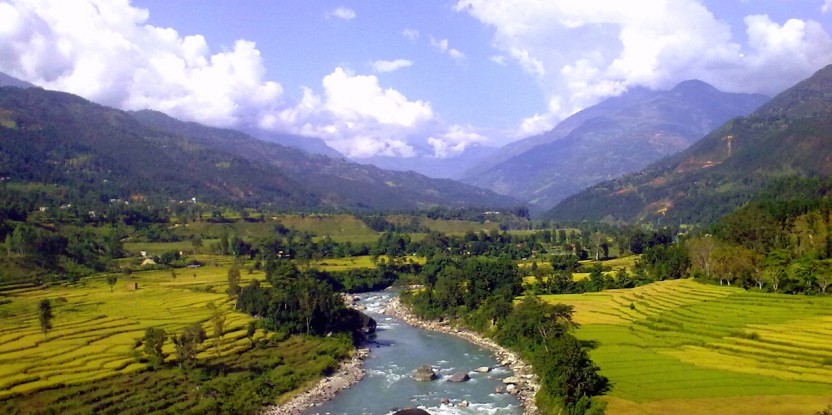
The concept of “landscapes”, in relation to achieving more sustainable land use and reaping the abundant associated benefits for food security, climate change, biodiversity conservation, poverty alleviation and the like, has risen rapidly up the global development agenda in recent years.
This year, of course, the development agenda has been dominated by the formal adoption of the Sustainable Development Goals (SDGs) – and now the work to achieve those goals has to get started.
On the eve of the third annual Global Landscapes Forum in Paris, it seems pertinent to begin to think of how these two intersect, and of the landscape approach as an organizing principle or implementing framework with regard to the SDGs.
The good news is that “thinking landscape” seems to offer considerable potential for achieving the SDGs. The bad news? Well, there is no bad news as such, but we do have to acknowledge that it won’t exactly be easy.
Although the idea of integrated landscape approaches has been pervasive in the literature in the past few decades, a recent review found that evidence of their effectiveness, as reported in the scientific literature, is surprisingly limited. This presents something of a problem for implementing partners, policy processes and the research community.
In the course of our research, we have identified those main areas supporting implementation – these three areas all represent challenges, but if we overcome them, we would be well on the way toward finding solutions and achieving the SDGs.
Step 1: Embrace integration
Integration is fundamental to the success of any attempt to operationalize a landscape approach. The UN SDG report, too, calls for a holistic approach. This covers integration within and across the spectrum of sectors operating within a landscape. That is, researchers must commit to working across disciplines, to bridge the divides between the social and biophysical sciences. Policy makers need to enhance engagement across ministries to stimulate the creation of policies that take into account the conflicting and competing objectives in any landscape. And practitioners have to negotiate differences in their desired outcomes, to enhance synergies and mitigate potential trade-offs.
The bad news? Well, there is no bad news as such, but we do have to acknowledge that it won’t exactly be easy.
Step 2: Work across time and space
To enhance the likelihood of optimal implementation, a landscape approach needs to consider both spatial and temporal scales. Implementing frameworks developed at the national scale, designed to meet global commitments, will not be effective if they are not aligned with local realities. Furthermore, all those working in a given landscape or with a stake in that landscape need to be clear about how they will achieve their planned changes, given the unique features and challenges.
This need for context cannot be overstated enough: each landscape is distinct and so what works in one landscape may or may not be appropriate elsewhere. A well-designed theory of positive change will facilitate implementation if it is an inclusive, facilitated and negotiated process that considers how to best build networks, develop institutional capacity, and ensure financial mechanisms that recognize the approach as a long-term process.
Step 3: Measure, measure, measure
Developing appropriate metrics will be fundamental to achieving SDGs—and exquisitely difficult, as attested to by the fact that indicators for the SDG targets are still being developed. However, a reasonable body of evidence on landscape monitoring and assessment is developing. Policy makers, researchers and practitioners should employ the available evidence and strive to coordinate efforts to develop complementary metrics for landscape approaches and progress on SDGs. These metrics will need to relate to the scalability issue raised in the second challenge above—we consider that metrics that evaluate progress will likely be more useful than ultimate outcome metrics.
A landscape approach—much like the shared vision of sustainable development—must be considered a process and not a project. Ultimately, success will be more about the journey itself, rather than the destination.
We want you to share Forests News content, which is licensed under Creative Commons Attribution-NonCommercial-ShareAlike 4.0 International (CC BY-NC-SA 4.0). This means you are free to redistribute our material for non-commercial purposes. All we ask is that you give Forests News appropriate credit and link to the original Forests News content, indicate if changes were made, and distribute your contributions under the same Creative Commons license. You must notify Forests News if you repost, reprint or reuse our materials by contacting forestsnews@cifor-icraf.org.